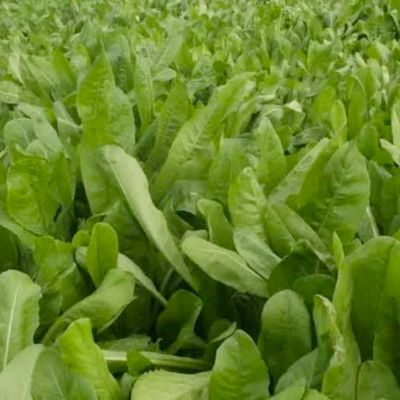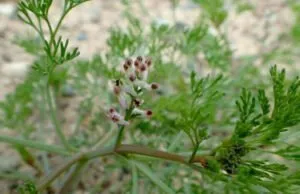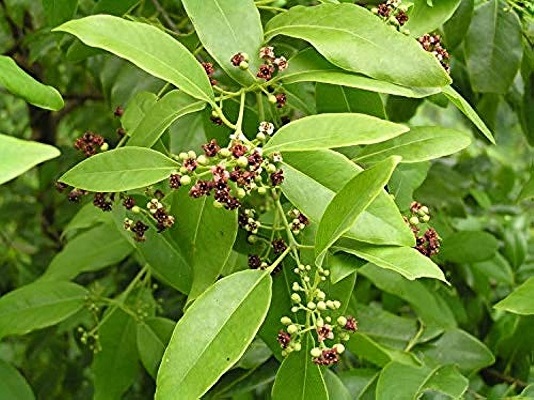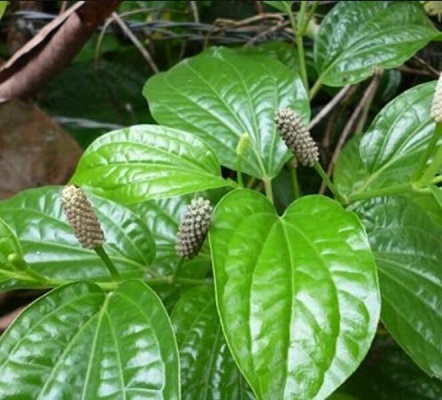On This Page
Pitpapra (Fumaria indica) – Uses, Benefits and Medicinal Properties
Introduction
Pitpapra (Fumaria indica) is an essential curative herb used in high Pitta conditions such as fever, gastritis, diarrhea, excessive thirst, etc. The entire plant is popularly employed in conventional systems of medicine for its therapeutic activities. It is also known as Parpata in Sanskrit.
Dr. Gupta’s Institute of Applied Food and Allergy have been studying on readily available herbs for the purpose of alleviating allergic condition. Our experts have conducted studies on Pitpapra and proven the plant’s therapeutic activities like Antiviral, Antipyretic, Hepatoprotective, Diuretic, Astringent, Aphrodisiac, Anthelmintic and Antiallergic actions, etc. Pitpapra can be used in various diseases like burning sensation, fever, vomiting, hemorrhage, ulcers, etc. Secondary metabolites of Pitpapra can be used in diabetic retinopathy. Extract of fractions of Parpata shows both protective and curative effects on Liver diseases. Methanolic extract of Parpata also shows aphrodisiac actions. Extract of aerial parts of this plant is used as a potent anthelmintic. Nowadays Pitpapra is also used in the treatment of allergic diseases.
Action of Pitpapra (Fumaria indica) in Allergies
IAFA experts have successfully proven the anti-allergic property of the plant Pitpapra. The plant contains phytoconstituents Fumaramine, Fumaricine, Fumaridine, Fumariflorines, Fumariline, Fumaritine, Parfumidine, Parfumine, Parviflorine, Stigmasterol, Adlumidieciene, Adlumine, Adlumidine, etc. These phytoconstituents aids the antiallergic and antiviral properties of Parpata. It can be used effectively in allergies in form of decoction or paste.
Vernacular Names
| Synonyms | Fumaria parviflora var. indica, Fumaria vaillantii var. indica |
| Native Names | |
| Sanskrit Name | Parpata, Parpatakah, Parpataka |
| Hindi Name | Pitta Papada, Dham Gajara, Pitpapra, Pitpapda |
| English Name | Fine Leaf Fumitory, Fine-Leaved Fumitory, Indian fumitory |
| Malayalam Name | Parpataka Pullu |
| Kannada Name | Kallu Sabasige |
| Marathi Name | Pitpapra |
Botanical Name
Fumaria Indica
Family
Fumariaceae
Morphology of Pitpapra (Fumaria indica)
- Annual herb
- Taproot system present
- Stem is herbaceous, erect
- Leaves are simple, narrow
- Inflorescence is raceme
- Flowers are small
- Fruits are globose nut
Ayurvedic Reference of Pitpapra (Fumaria indica)

Geographical Distribution of Pitpapra (Fumaria indica)
It is a cosmopolitan plant. Very commonly found herb, everywhere in the country.
Phytoconstituents of Pitpapra (Fumaria indica)
The plant contains phytoconstituents Fumaramine, Fumaricine, Fumaridine, Fumariflorines, Fumariline, Fumaritine, Parfumidine, Parfumine, Parviflorine, Stigmasterol, Adlumidieciene, Adlumine, Adlumidine, and Sanguinarine, etc.
Parts Used of Pitpapra (Fumaria indica)
- Whole plant
Dosage of Pitpapra (Fumaria indica)
- Decoction (Kwatha) – 50-100 ml
- Paste (Kalka) – 1-3 g
Medicinal Properties of Pitpapra (Fumaria indica)
- Trsnahara – Relieves excessive thirst
- Dahasamaka – Relieves burning sensation
- Twakrogahara – Relieves diseases of the skin
- Jwarahara – Relieves fever
- Varnya – Promote skin complexion
- Rucya – Useful in anorexia
- Kushtaghna – Relieves infectious skin diseases
- Chardighna – Useful in vomiting

Have A Health Issue?
Consult Online
- Dr. Sahil Gupta (B.A.M.S., M.H.A.)
Ayurvedic Allergy Specialist
CEO & Founder of IAFA®
Home Remedies of Pitpapra (Fumaria indica)
Ayurveda is an ancient system of medicine popular in India. The treatment system adopted by Ayurveda is purely based on naturally available herbs. Pitpapra is one of the most widely used herb. Due to its high medicinal value, it is used in treating many diseases like:-
- In Vomiting (Chardi) – Decoction of whole parts of Pitpapra taken will check vomiting.
- In Fever (Jwara) – Pitpapra is taken, crushed, and made into a decoction. It is taken to cure fever.
- In Intrinsic hemorrhage (Raktapitta) – Juice of Pitpapra, Ficus benghalensis leaves and Clitoria ternatea is mixed together and taken with honey.
- In Bleeding piles (Raktarsas) – Pitpapra is processed with ghee and washed over the pile mass to check bleeding.
- In Erysipelas (Visarpa) – Juice of Pitpapra is processed with ghee and applied over wounds that occurred because of erysipelas.
- In Ulcers (Vrna) – Oil processed with the juice of Pitpapra is useful in vrna.
- In Excessive thirst (Trisna) – Water processed with Pitpapra is used to drink repeatedly.
- In Burning sensation (Daha) – Ghee processed with Pitpapra is applied over areas with a burning sensation.
Ayurveda is an Indian system of medicine which is popular since ancient times. Dr. Gupta’s IAFA has been conducting many research studies to find out different phytoconstituents of herbs and their action in the body. Our experts have acquired knowledge about the actions of different phytoconstituents in the body and have used this knowledge to produce various medicines and provide treatment. IAFA is the provider of safe and effective treatment for a wide range of diseases, mainly allergic diseases all purely based on Ayurveda.
Reach IAFA for safe herbal remedies for all your ailments!!!
Was this Page Helpful?
Read More Articles
-

Kasini (Cichorium intybus)
Kasini (Cichorium intybus) commonly known as Chicory is a perennial herb, with large…
-
-









